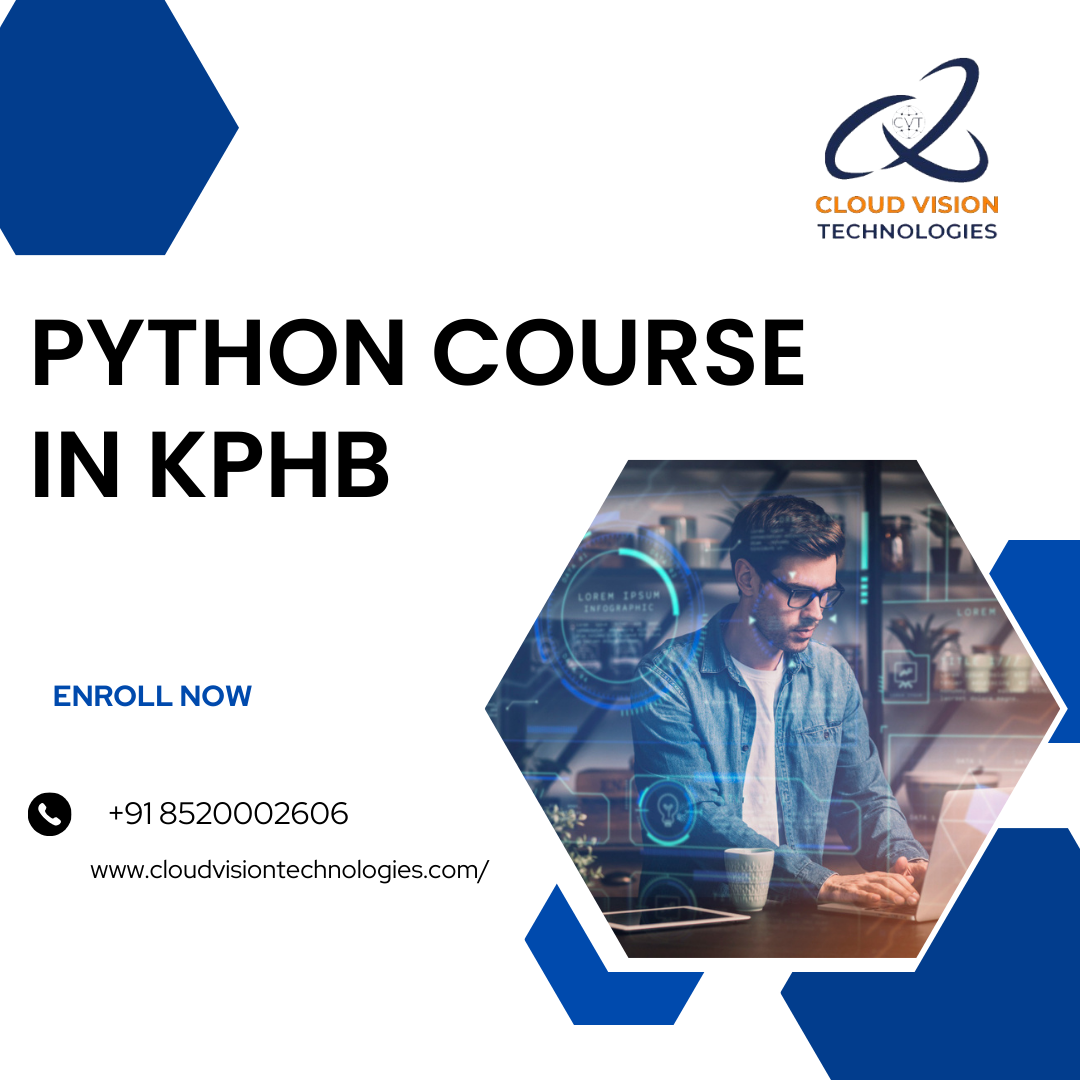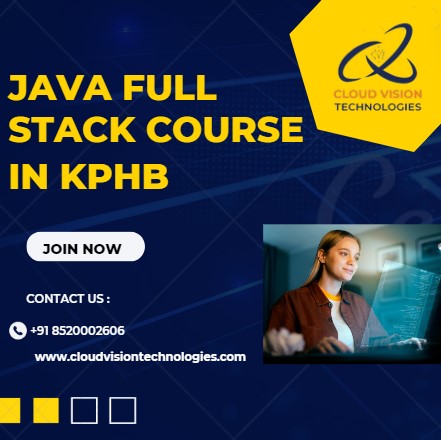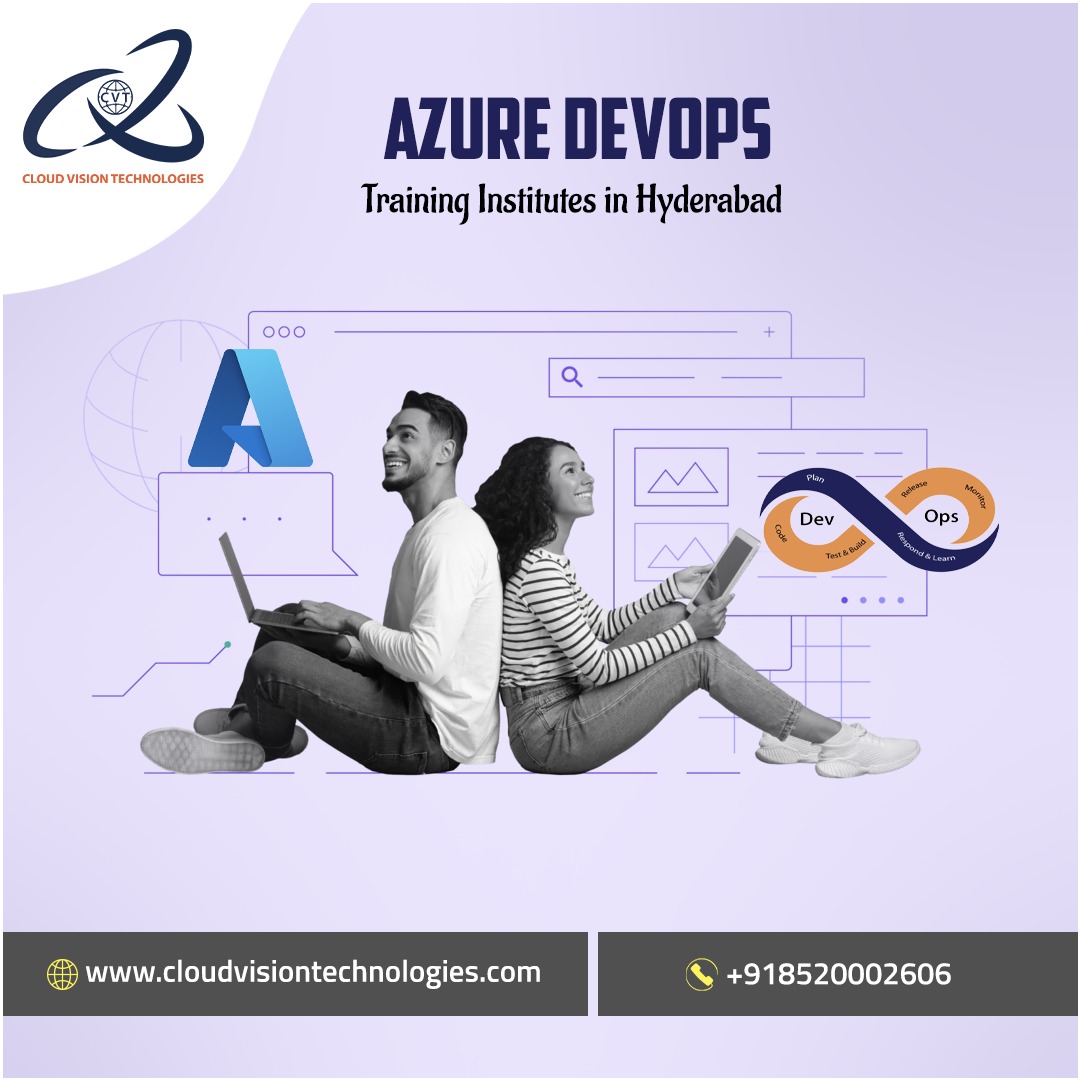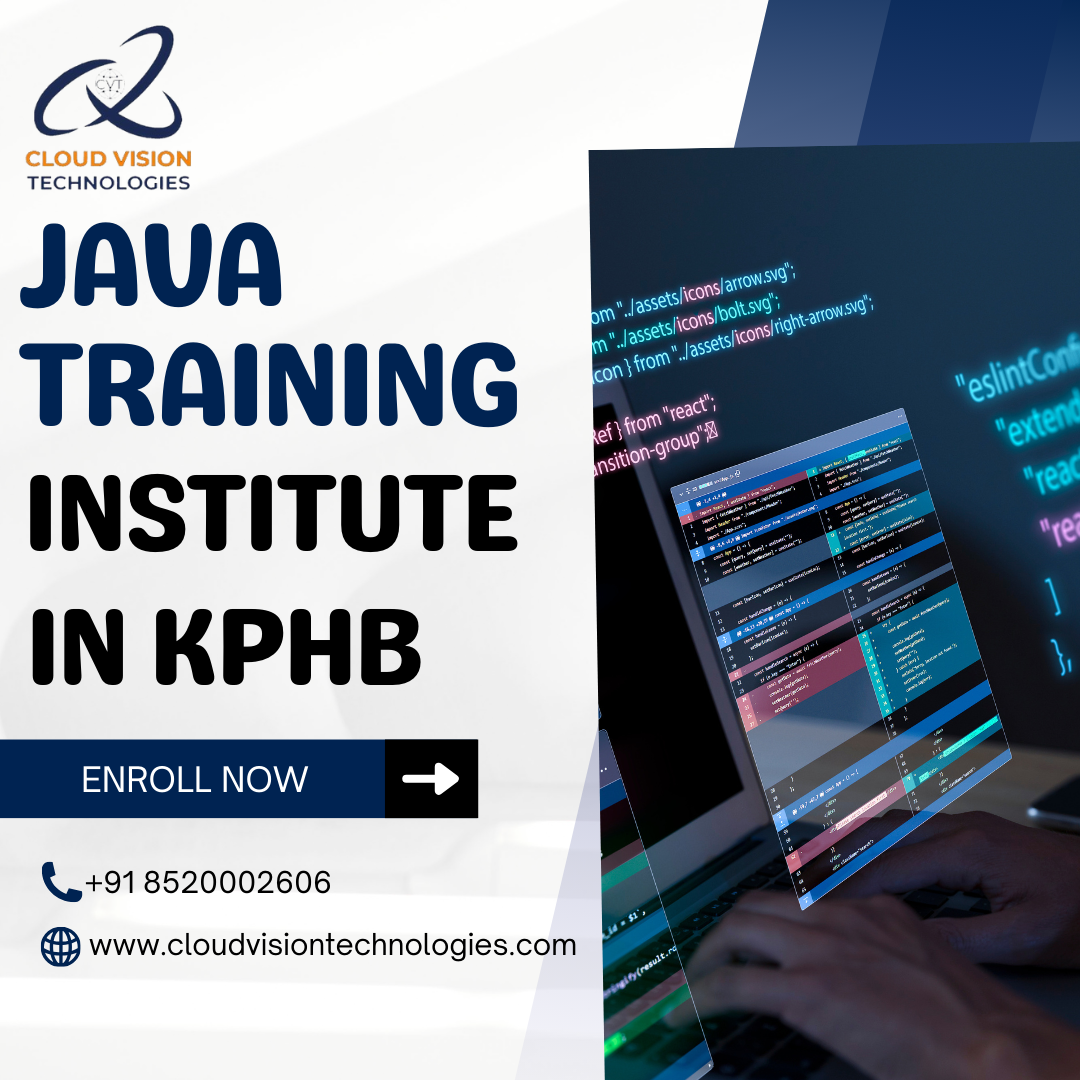
Python Course in KPHB – Cloud Vision Technologies
Title: Master Python Programming with Cloud Vision Technologies provides python course in KPHB in KPHB
Introduction:
Python has emerged as one of the most popular and versatile programming languages in the world, with applications ranging from web development and data analysis to artificial intelligence and machine learning. Cloud Vision Technologies provides python courses in KPHB, we recognize the immense potential of Python and are committed to providing comprehensive Python courses designed to equip learners with the skills and knowledge needed to excel in this dynamic field. Join us as we embark on a journey to explore the world of Python programming and unlock your full potential with Cloud Vision Technologies provides python course in KPHB.
Understanding Python
Python, a versatile and powerful programming language, has gained immense popularity in recent years due to its simplicity, flexibility, and vast ecosystem of libraries and frameworks. In this chapter, we embark on a journey to understand the fundamentals of Python programming and explore why it has become the language of choice for developers, data scientists, educators, and professionals across various domains.

Origins and Evolution:
Python was created in the late 1980s by Guido van Rossum, a Dutch programmer, with the goal of developing a language that was both easy to read and powerful. The language was officially released in 1991, and since then, it has undergone several major revisions, with Python 2.x and Python 3.x being the most notable versions.
Python’s design philosophy emphasizes readability, simplicity, and explicitness, making it accessible to beginners while still being powerful enough for experienced developers. The language’s syntax is clean and straightforward, with minimal boilerplate code, allowing developers to express concepts in fewer lines of code compared to other languages.
Key Features and Advantages:
Python’s popularity can be attributed to several key features and advantages:
Elegant Syntax: Python’s syntax is designed to be intuitive and easy to read, with a focus on simplicity and clarity. This makes it an ideal language for beginners and experienced developers alike.
Rich Library Ecosystem: Python boasts a vast ecosystem of libraries and frameworks for various purposes, including web development, data analysis, machine learning, artificial intelligence, and more. These libraries enable developers to leverage pre-built solutions and accelerate the development process.
Procedural and Object-Oriented Programming: Python supports both procedural and object-oriented programming paradigms, giving developers the flexibility to choose the approach that best suits their needs. This versatility allows Python to be used for a wide range of applications, from small scripts to large-scale software projects.
Community-Driven Development: Python has a vibrant and active community of developers who contribute to its growth and evolution. The Python community is known for its inclusivity, collaboration, and commitment to open source principles, which has played a significant role in shaping the language’s development.
We’ve explored the fundamentals of Python programming and gained insight into why it has become such a popular and widely-used language. From its origins and design philosophy to its key features and advantages, Python offers a unique combination of simplicity, power, and flexibility that makes it an ideal choice for developers and organizations around the world. As we continue our journey through this course, we’ll delve deeper into Python’s syntax, features, and applications, unlocking the full potential of this remarkable language.
Setting Up the Environment
Setting up the development environment is the crucial first step for any aspiring Python programmer. In this chapter, we’ll guide participants through the process of setting up their Python development environment, ensuring they have all the necessary tools and configurations to start coding efficiently and effectively.
Installing Python:
The first step is to install Python, the programming language itself, on your system. Python is available for download from the official Python website (python.org) and is supported on Windows, macOS, and Linux. The website provides installer packages for different operating systems, making it easy for users to install Python with just a few clicks.
Once Python is installed, users can verify the installation by opening a command prompt or terminal window and typing python –version. This command will display the installed version of Python, confirming that the installation was successful.
Choosing an Integrated Development Environment (IDE):
While Python can be written and executed using simple text editors like Notepad or Vim, using an Integrated Development Environment (IDE) can significantly enhance productivity and streamline the development process. In this chapter, we’ll explore some popular Python IDEs and their features:
PyCharm: Developed by JetBrains, PyCharm is a powerful IDE designed specifically for Python development. It offers features such as intelligent code completion, syntax highlighting, debugging tools, and integration with version control systems like Git.
Visual Studio Code (VS Code): Developed by Microsoft, VS Code is a lightweight yet powerful code editor that supports Python development through extensions. It offers features such as IntelliSense, debugging, and built-in Git integration, making it a popular choice among Python developers.
Configuring the Development Environment:
Once an IDE is chosen, participants will learn how to configure their development environment for optimal productivity. This includes setting up project directories, configuring code formatting and linting tools, and installing necessary Python packages using package managers such as pip or conda.
Participants will also learn about virtual environments, which allow them to create isolated environments for their Python projects, preventing conflicts between different project dependencies.
By the end of this, participants will have a fully configured Python development environment ready to tackle their Python projects with confidence. They’ll be equipped with the knowledge and tools needed to write, debug, and execute Python code efficiently, setting the stage for their journey into the world of Python programming.
Python Basics
Participants embark on their journey into the world of Python programming by delving into its foundational concepts. This chapter serves as the building block for understanding Python syntax and programming constructs, enabling participants to grasp the fundamental principles that underpin the language’s functionality.
Variables and Data Types:
Participants begin by understanding the concept of variables, which are containers used to store data values. They learn about Python’s dynamic typing system, allowing variables to be assigned values of different data types without explicitly specifying the type. Through interactive examples and exercises, participants explore Python’s core data types, including integers, floats, strings, booleans, and complex numbers. They also learn about type conversion and the built-in functions for manipulating data types.
Operators:
Next, participants delve into Python’s operators, which are symbols used to perform operations on variables and values. They learn about arithmetic operators (+, -, *, /), comparison operators (==, !=, <, >), logical operators (and, or, not), and assignment operators (=, +=, -=, *=, /=). Participants understand the precedence and associativity of operators, enabling them to write complex expressions with confidence.
Control Flow Structures:
Participants explore Python’s control flow structures, which dictate the order in which statements are executed in a program. They learn about conditional statements, such as if-else and nested if-else, which allow for decision-making based on certain conditions. Participants also delve into iterative statements, including for loops and while loops, which enable repetitive execution of code blocks. Through hands-on exercises and coding challenges, participants gain proficiency in using control flow structures to create dynamic and responsive Python programs.
Built-in Data Structures:
In this section, participants learn about Python’s built-in data structures, which are fundamental for organizing and manipulating data efficiently. They explore lists, which are ordered collections of items; tuples, which are immutable sequences of elements; dictionaries, which are key-value pairs for storing data; and sets, which are unordered collections of unique elements. Participants understand the properties and methods associated with each data structure, allowing them to leverage their capabilities in real-world programming scenarios.
By the end of Chapter 3, participants have gained a solid understanding of Python’s basic syntax and programming constructs. They are equipped with the knowledge and skills needed to work with variables, data types, operators, and control flow structures, laying a strong foundation for their continued exploration of Python programming.
Cloud Vision Technologies provides python course in KPHB
Cloud Vision Technologies provides python course in KPHB is a leading provider of technology education and training services, with a focus on empowering individuals and organizations with the skills and knowledge needed to succeed in the rapidly evolving tech industry. Established with a vision to bridge the gap between traditional education and industry demands, Cloud Vision Technologies provides python course in KPHB and offers a wide range of courses and programs designed to cater to the diverse needs of learners.
Key Highlights of Cloud Vision Technologies provides python course in KPHB:
Comprehensive Course Offerings:
Cloud Vision Technologies provides python course in KPHB and offers a comprehensive range of courses covering various domains, including programming languages (such as Python, Java, JavaScript), data science, machine learning, artificial intelligence, cloud computing, web development, and more. The courses are carefully designed to provide participants with a deep understanding of the subject matter and hands-on experience with cutting-edge tools and technologies.
Expert Instructors:
Cloud Vision Technologies provides python courses in KPHB, learning is facilitated by a team of experienced instructors who are industry professionals with extensive knowledge and practical experience in their respective fields. The instructors bring real-world insights and expertise into the classroom, ensuring that participants receive high-quality education and mentorship.
Hands-On Learning:
Cloud Vision Technologies provides a python course in KPHB emphasizes hands-on learning experiences, providing participants with opportunities to apply their knowledge and skills in real-world scenarios. Through practical exercises, projects, case studies, and workshops, participants gain valuable experience and confidence in their abilities, preparing them for success in their careers.
Personalized Attention:
With small class sizes and personalized attention from instructors, Cloud Vision Technologies provides a python course in KPHB ensures that each participant receives the support and guidance they need to achieve their learning goals. Instructors are readily available to answer questions, provide feedback, and offer assistance, fostering a supportive learning environment.
Industry-Relevant Curriculum:
The curriculum at Cloud Vision Technologies provides a python course in KPHB that is meticulously designed to align with industry standards and best practices. Courses are regularly updated to incorporate the latest advancements and trends in technology, ensuring that participants graduate with relevant and up-to-date skills that are in high demand in the job market.
Job Placement Assistance:
Cloud Vision Technologies provides a python course in KPHB that goes beyond education by offering job placement assistance to help participants kick start their careers in the tech industry. Through resume writing workshops, interview preparation sessions, networking events, and job referrals, participants receive support in securing internships and job opportunities with leading companies.
Overall, Cloud Vision Technologies provides python course in KPHB and is committed to empowering individuals with the knowledge, skills, and confidence needed to thrive in the fast-paced and competitive field of technology. With its comprehensive course offerings, expert instructors, hands-on learning approach, and job placement assistance, Cloud Vision Technologies provides python course in KPHB stands as a trusted partner in the educational journey of aspiring tech professionals.
Conclusion
Cloud Vision Technologies provides python course in KPHB stands as a beacon of excellence in the realm of technology education and training. With its comprehensive course offerings, expert instructors, hands-on learning approach, and job placement assistance, Cloud Vision Technologies provides a python course in KPHB that is committed to empowering individuals with the knowledge, skills, and confidence needed to succeed in the fast-paced and competitive tech industry.
Whether you are looking to kickstart your career in programming, data science, machine learning, web development, or any other tech domain, Cloud Vision Technologies provides a python course in KPHB that provides the resources, support, and guidance you need to achieve your goals. From industry-relevant curriculum to personalized attention and job placement assistance, Cloud Vision Technologies provides a python course in KPHB ensures that participants receive a top-notch education and are well-prepared for the challenges and opportunities that lie ahead.
By choosing Cloud Vision Technologies to provide a python course in KPHB, you are not just enrolling in a training program; you are joining a community of learners, mentors, and industry professionals who are dedicated to your success. With Cloud Vision Technologies providing a python course in KPHB as your partner, the possibilities are endless, and your journey towards a rewarding career in technology begins here.
Address: Cloud Vision Technologies
Location: Office no : 1802B, 18th floor, Manjeera Trinity corporate Building,
KPHB, Kukatpally, Hyderabad, Telangana 500072
Contact Number : +91 8520002606
Mail ID: info@cloudvisiontechnologies.com





